
Do Ice Baths and Cold Showers Burn Fat?
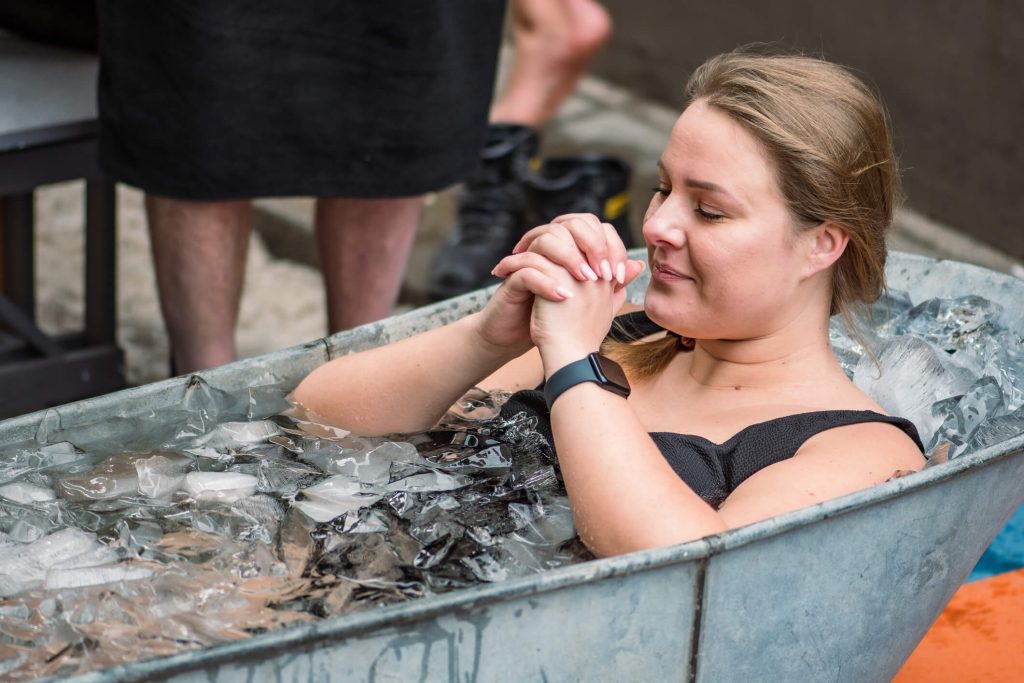

Do Ice Baths and Cold Showers Burn Fat?
‘Tis the season to take advantage of the opportunity for a polar bear plunge. Okay, so you might not have a frozen lake available to jump into, but what about a cold shower? Or an ice bath? What benefits do they provide, and could that cold exposure really help you burn fat?
How Does Your Body Burn Fat?

Before we get into ways you might be able to encourage fat burn, let’s cover just the basics of how your body burns fat. We’ll get into more nuances later.
Most fats are fatty acids attached to the glycerol backbone. Your body burns fat by breaking it into usable energy through lipolysis and beta-oxidation. Lipolysis refers to when the enzyme lipase detaches the fatty acids from the glycerol. Whereas, oxidation is when the individual fatty acids (typically long chains) are cleaved into two carbon molecules that go into the mitochondria for further energy (ATP) production.
When you need energy, hormones like epinephrine, norepinephrine, and glucagon signal fat cells to trigger lipolysis of stored fat molecules
Once released, free fatty acids travel through your bloodstream to tissues such as muscles, the liver, and the heart. These tissues use the fatty acids as a fuel source. Inside the cells, the products of beta-oxidation go into mitochondrial energy production. The mitochondria rely on oxygen. This mitochondrial energy production is very efficient at producing cellular energy (ATP).
In certain conditions, like prolonged fasting or following a low-carbohydrate diet, the body shifts into a metabolic state called ketosis. During ketosis, the liver converts fat into molecules called ketone bodies, which serve as an efficient alternative energy source for the brain and body. This allows the body to rely more heavily on fat stores for energy when carbohydrates are scarce.
The byproducts of fat metabolism include carbon dioxide, which you exhale, and water, which leaves your body through sweat, urine, or breath. If you’re in ketosis, you may also exhale some ketone bodies, leaving a fruity breath smell. Fat burning can also occur during exercise, fasting, and even at rest, although the rate of fat utilization depends on the body’s energy demands and activity level.
How Might Cold Exposure Help Burn Fat?
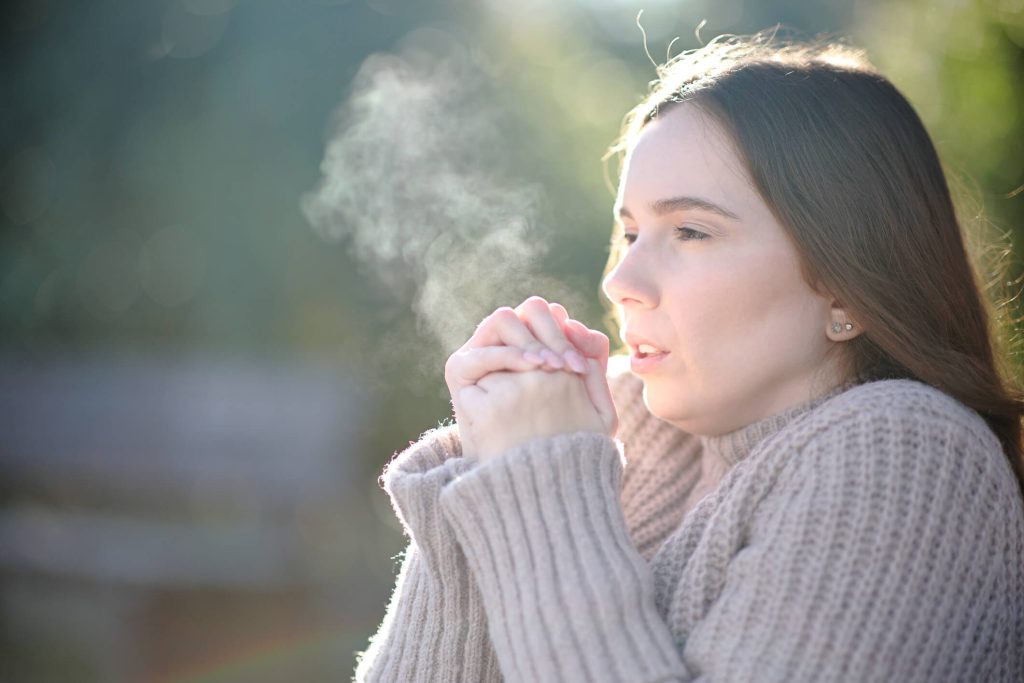
Now that you understand how your body burns fat, let’s explore one intriguing way to potentially increase the process: cold exposure. From icy showers to chilly outdoor activities, exposing your body to colder temperatures may play a role in fat burning. Here’s how it might work.
Thermogenesis (Shivering and Non-Shivering)
Cold exposure activates thermogenesis, which is your body’s way of producing heat to maintain its core temperature. This process keeps you warm and increases energy expenditure, making it a fascinating tool for burning fat.
Two main thermogenesis types are linked to cold exposure: shivering thermogenesis and non-shivering thermogenesis.
Shivering Thermogenesis
When you shiver or are exposed to cold, your body isn’t just trying to stay warm—it’s also working to burn fat. As your muscles contract, they release the hormone irisin. The more you shiver, the more irisin you release, so your body generates heat and energy.
Irisin increases the mitochondria in your fat cells, turning these fat cells beige or brown. Brown fat is rich in mitochondria, so it burns more calories. These extra calories keep you warm naturally.
A study investigated how different energy sources, like plasma glucose, muscle glycogen, and fat contribute to heat production during prolonged, low-intensity shivering in cold conditions. Researchers exposed participants to cold using a special suit that circulated 50°F (10°C) water around their bodies for two hours.
Cold exposure significantly increased heat production by 2.6 times. The body burned more of each energy source: plasma glucose increased by 138%, muscle glycogen by 109%, and fat by 376%. Of all the energy sources, fat contributed the most at 50%, followed by muscle glycogen at 30%, plasma glucose at 10%, and proteins at 10%.
This highlights fat’s important role in generating heat during cold exposure and shivering and the extent to which the body uses fat while shivering.
Non-Shivering Thermogenesis
Unlike shivering, non-shivering thermogenesis (NST) is your body’s way of generating heat without muscle contractions. Instead, it happens mainly in brown adipose tissue or brown fat, which is specialized for burning calories for heat. This process is especially important when you’re in a cold environment, helping your body stay warm and maintain a stable temperature.
Your brown fat is brown because it is packed with mitochondria—tiny powerhouses in your cells that play a crucial role in energy metabolism. These mitochondria burn calories and generate heat through a process known as mitochondrial uncoupling.
Normally, mitochondria produce energy as ATP for various cellular uses, such as muscle contractions and cellular signaling with minimal energy losses as heat. However, in brown fat, this process is “uncoupled,” which means a lot of calories burned are as heat instead of for other purposes.
Other hormones like fibroblast growth factor 21 (FGF21) can boost non-shivering thermogenesis by making your fat cells act more like brown fat, which helps your body burn energy more efficiently. The sympathetic nervous system also plays a role in regulating non-shivering thermogenesis, but cold exposure sends signals that directly activate brown fat, making the process even more effective.
A study of 11 lean male participants explored whether cold exposure increases mitochondrial uncoupling in skeletal muscle, contributing to adaptive thermogenesis. Researchers exposed participants to a comfortable baseline temperature and mild cold exposure at 60.8°F (16°C) without shivering. The researchers measured total daily energy expenditure and took muscle biopsies to check for mitochondrial uncoupling in muscle fibers.
The results showed that exposure to mild cold increased the number of calories burned by about 670. Researchers linked the increase in calorie burn to a rise in state four respiration, a sign that mitochondrial uncoupling was happening.
Blood Sugar Control
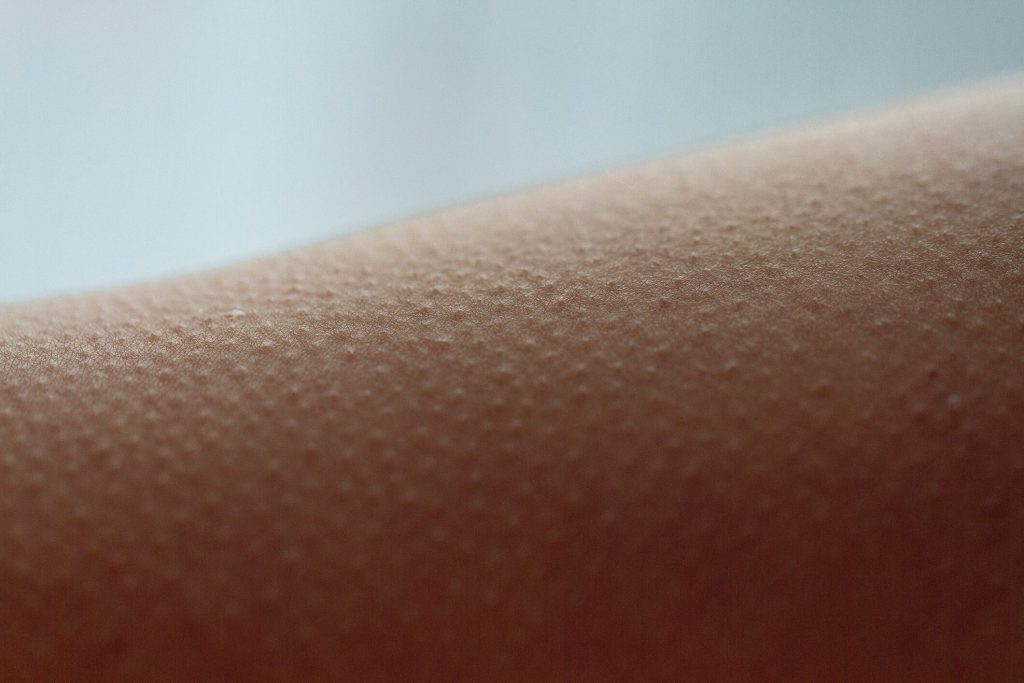
Cold water immersion is also associated with improved blood sugar control, a key to your body’s ability to burn fat for energy. When blood sugar levels are stable, your body is more efficient at using fat as a fuel source instead of relying on glucose from carbohydrates.
This is particularly beneficial during fasting or exercise when your body needs to access fat stores for energy. Additionally, stable blood sugar helps maintain consistent energy levels, making staying active and burning calories throughout the day easier.
One of the ways cold exposure helps with this process is by boosting the production of adiponectin in fat tissue during thermogenesis. Adiponectin is a protein hormone that helps regulate blood sugar levels and promotes the breakdown of fatty acids.
A study of twelve healthy men examined how cold exposure affects adiponectin levels in men and whether these changes are influenced by glucose intake or carbohydrate availability. Researchers performed two different tests.
In the first study, participants were exposed to a cold of 50°F (10°C) for 120 minutes while drinking either low or high-glucose beverages. In the second study, researchers exposed participants to cold after following either a low-carb diet with exercise or a high-carb diet without exercise.
Adiponectin levels increased significantly during cold exposure in both studies. However, this increase was blocked when participants drank glucose, suggesting that glucose intake can interfere with the body’s ability to produce adiponectin in response to cold.
To sum up, cold exposure may help your body burn fat through several mechanisms. Shivering increases fat burning while releasing irisin, which activates calorie-burning brown fat. Non-shivering thermogenesis improves fat use by increasing brown fat and skeletal muscle energy expenditure.
Improved blood sugar control and increased adiponectin production during cold exposure make it easier for your body to access fat as fuel. Together, these processes show how cold exposure could play a role in supporting fat metabolism.
Gender and Timing Differences
Gender may also affect how you respond to cold exposure because we generate heat and burn energy differently.
One study explored these gender differences by measuring cold-induced thermogenesis in 24 young, lean participants (12 men and 12 women). Participants spent 2.5 hours on water-cooled mattresses set to their personalized cooling threshold, once in the morning and once in the evening, with a day of rest in between. During these sessions, researchers measured energy expenditure and supraclavicular skin temperature—a marker of brown fat activity.
The findings showed that men’s and women’s bodies react differently to cold based on the time of day:
- In men, energy expenditure was significantly higher in the morning compared to the evening. They also displayed increased skin temperature near brown fat stores and elevated free fatty acid levels, key to fueling thermogenesis in the morning.
- For women, the time of day didn’t seem to affect overall energy expenditure. However, women had higher increases in circulating free fatty acids, triglycerides, and cholesterol in the morning compared to the evening, suggesting that their bodies rely more on lipid metabolism during morning cold exposure.
For men, incorporating morning cold exposure might maximize calorie burn by taking advantage of higher energy expenditure during that time. For women, focusing on morning cold exposure could help enhance fat metabolism.
Other Health Benefits of Cold Exposure
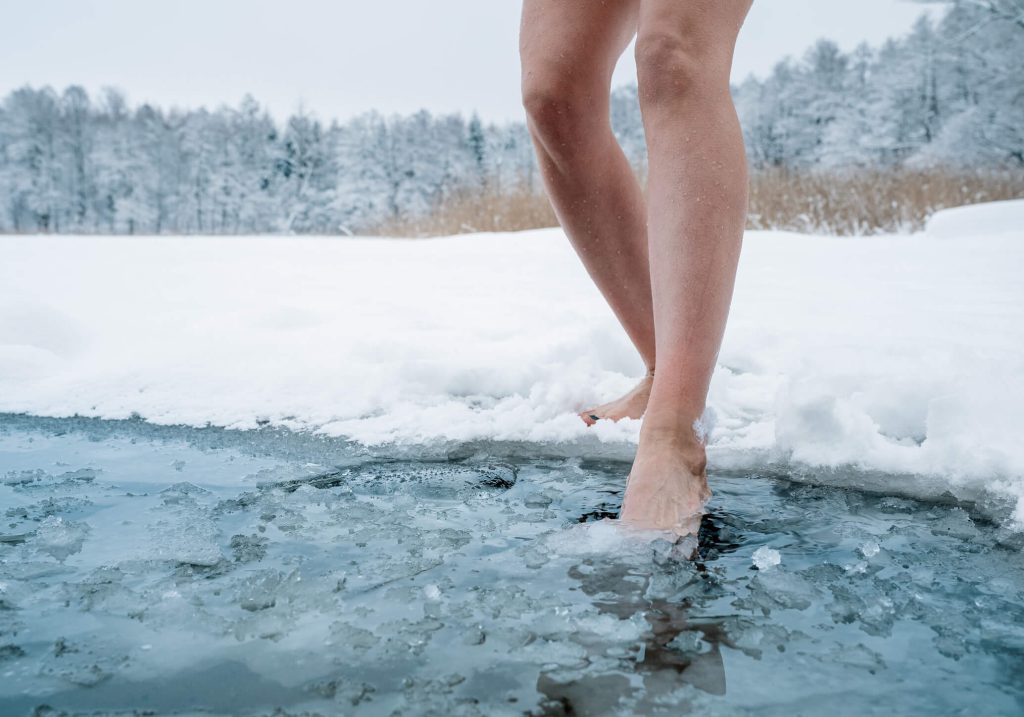
Even if you’re exploring cold water immersion because you’re interested in the fat-burning potential, the benefits don’t stop there. Let’s explore other reasons you may want to consider catching a chill.
Exercise Performance and Recovery
When I think about ice baths, my mind automatically goes to scenes from movies with athletes icing their muscles after a big game or tough practice. And they’re doing it for a great reason. Cold water immersion is excellent for exercise recovery and performance.
A meta-analysis of 20 studies involving 419 healthy participants examined the impact of cold water immersion of less than or equal to 59°F (15°C) on post-exercise recovery. Researchers found that cold water immersion effectively:
- Reduced muscle stiffness
- Alleviated fatigue
- Minimized exercise-induced muscle damage
- Enhanced athletic performance, helping athletes excel in subsequent workouts
We turn to another meta-analysis for guidance on the best way to use cold water immersion for recovery. While based on a small number of studies, researchers identified the ideal protocol for exercise recovery with cold-water immersion: immersing in water at 52-59°F (11-15°C) for 11-15 minutes.
Immune System Support
A polar bear plunge or even a daily chill in the shower could be a great way to support your immune system during the winter months. This might be counterintuitive since most people believe cold exposure makes you sick. And it’s true that cold exposure, like exercise, temporarily weakens your immune system within a few hours. However, in the long term, both cold and exercise strengthens your baseline immune functions, which is why clinical studies confirm cold exposure’ immune support benefits
A study involving 3,018 adults explored the effects of regular cold showers on sickness. Researchers assigned participants to take cold showers at temperatures of 50°F and 54°F (10°C to 12°C) lasting 30, 60, or 90 seconds, or hot showers for 30 days.
All cold shower groups missed work significantly less often than the hot shower group, with a 29% reduction in sickness absence overall, suggesting possible health benefits linked to immune function.
Researchers aren’t entirely sure why cold exposure may help support the immune system, but there are some insights from recent studies. As we’ve already covered, when exposed to cold, your body typically responds by shivering. This also triggers the release of cortisol and norepinephrine—which are stress hormones.
Another study may provide insight. Researchers explored the potential immune effects of a 10-day training program that combined meditation, breathing exercises like hyperventilation and breath-holding, and cold exposure, including ice water immersion. To test their immune responses, researchers injected participants with a harmless bacterial toxin from E. coli, designed to cause flu-like symptoms.
The trained group experienced higher adrenaline levels, which led to a rapid increase in an anti-inflammatory molecule called IL-10. Trained participants also reported fewer flu-like symptoms and lower levels of molecules that promote an inflammatory response.
This supports the idea that cold exposure may help the body better regulate its response to immune challenges. Adding in breathing exercises and meditation may further increase the effects.
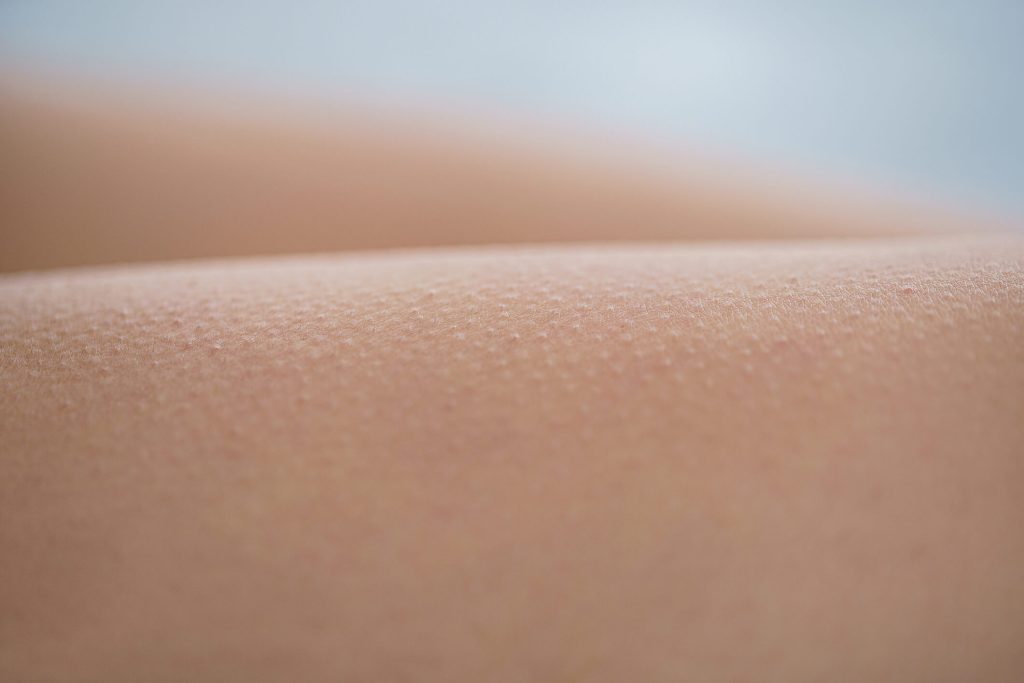
Improved Mood
Cold water immersion may also help improve your mood through various hormones and vagus nerve activation.
A study of 33 healthy adults new to cold-water immersion explored how cold-water immersion affects mood and brain activity. Participants took a 5-minute bath in water at 68°F (20°C). Researchers measured their brain activity and emotional states before and after the immersion.
After the cold-water bath, participants felt more positive emotions, like being active, alert, and inspired, and reported less distress and nervousness. Researchers also observed increased connectivity between brain areas related to attention control, emotion, and self-regulation.
Another study found similar mood improvements. In a study of 64 healthy young adults, participants spent up to 20 minutes in water at 56.5°F (13.6°C), with an average immersion time of about 18.5 minutes. The cold-water immersion group showed significantly improved mood, including reductions in fatigue and confusion, compared to the control group.
A possible reason for improving mood could be through a process related to the concept of hormesis. Hormesis refers to the idea that small doses of stress can benefit the body, while larger doses can be harmful. In the case of cold-water immersion, the brief stress of the cold stimulates the body’s stress response, which, over time, can lead to improved stress management and mood regulation.
Improved Sleep
Your body temperature and sleep quality are closely connected. To fall asleep, your core body temperature needs to drop, which happens when your body releases heat through your skin. This cooling process helps you fall asleep faster and sleep better.
Full-body cold-water immersion, including your head, before bed could support this process, especially after intense exercise, helping you recover and get better sleep.
A study of 12 male endurance runners examined how different types of cold-water immersion at 56°F (13.3°C) affect sleep quality after intense exercise. The participants experienced three conditions: whole-body immersion (including the head), partial-body immersion, and no immersion. Researchers measured their sleep using polysomnography.
Whole-body immersion resulted in a lower core body temperature and increased deep sleep compared to the other two conditions. Both whole-body and partial immersion reduced sleep disruptions, but only whole-body immersion reduced limb movements during sleep.
Researchers suggest that for maximum sleep improvement, cold-water immersion should be done in the evening, close to bedtime, and involve full-body immersion rather than partial immersion.
Again, this may seem counterintuitive because many people find cold exposures wake them up. In the end, individual results may vary and you may have to do what works best for you in terms of bedtime routines. Some people sleep better with hot baths or showers, while others with cold immersion.
How to Use Ice Baths and Cold Showers
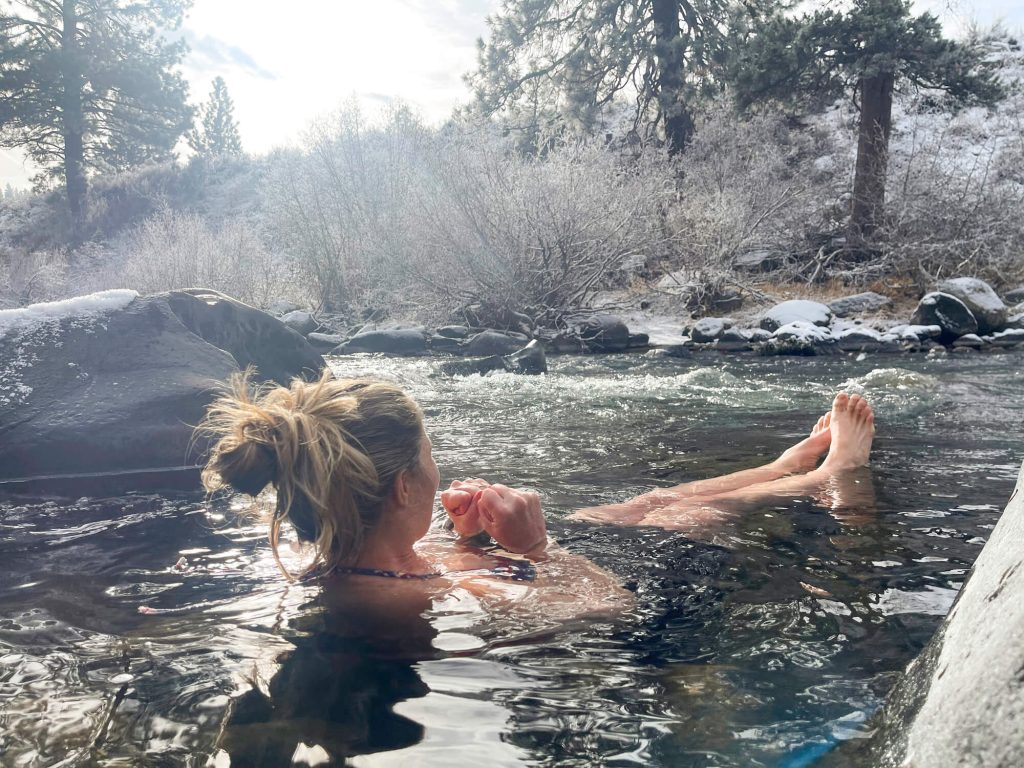
Cold exposure, whether through ice baths, cold showers, or even a chilly dip outdoors, can be a powerful tool for supporting your health. But for best results—and safety—it’s important to approach these practices thoughtfully.
Start Small
If you’re new to cold exposure, ease into it to let your body adapt gradually. Begin with a short cold shower, about 30 seconds to a minute, using cool—not icy—water. Once comfortable, you can extend the duration or decrease the water temperature to enhance your body’s tolerance. Similarly, for ice baths, start with brief sessions at milder temperatures, such as 1-2 minutes at 50-59°F (10-15°C).
Time and Temperature Guidelines
Ice baths and cold showers don’t have to be extreme to be effective. Research suggests cold water immersion at 52-59°F (11-15°C) for 11-15 minutes is ideal for exercise recovery. However, as a beginner, aim for 1-2 minutes and increase as your body adjusts.
Remember, consistency matters more than pushing your limits—overdoing it can lead to adverse effects.
Safety Considerations
As invigorating as cold exposure can be, safety is paramount. Avoid forcing yourself into prolonged or extreme cold exposure, especially if you have underlying health conditions such as cardiovascular issues. Always ensure you have a warm space to recover after a session and listen to your body—stop if you feel dizzy, numb, or overly uncomfortable.
Cold water immersion isn’t safe for everyone. Avoid or approach it cautiously if you:
- Have cardiovascular issues
- Have Raynaud’s disease
- Have respiratory conditions
- Are pregnant
- Have cold urticaria
- Have diabetes
- Are recovering from injury or illness
- Have experienced cold shock
- Are a child or older adult
It’s always best to consult your healthcare practitioner before trying cold water immersion.
Support Metabolic Health Without the Cold Plunge
If cold exposure isn’t for you, consider taking supplements like kApex® and Berberine Breakthrough to help support mitochondrial uncoupling and metabolic health.
kApex®: Support Mitochondrial Function and Energy
Mitochondria are the body’s fat-burning powerhouses. Poor mitochondrial function can lead to fatigue and weight gain, and make transitioning to low-carb or keto diets more challenging.
Benefits of kApex®:
- Supports mitochondrial health with L-carnitine, CoQ10, and Innoslim for enhanced fat metabolism.
- Improves glucose absorption in muscle cells, aiding growth and recovery on low-carb diets.
- Boosts AMPK by 52% in muscles and 300% in fat cells, and increases adiponectin, a fat-burning hormone, by up to 248%.
Berberine Breakthrough: Optimize Blood Sugar
This supplement helps your body utilize carbohydrates better, ensuring glucose is used for energy in your muscles as opposed to as fat.
Benefits of Berberine Breakthrough:
- Supports healthy blood sugar and insulin response.
- Improves glucose uptake into cells for better energy use.
- Supports mitochondrial uncoupling, which increases calorie expenditure as heat.
Both kApex® and Berberine Breakthrough provide targeted support for mitochondrial function, energy production, and metabolic health, making them great choices for supporting fat loss without the cold plunge.
Conclusion
Cold exposure offers a fascinating range of potential benefits, from supporting fat metabolism and exercise recovery to improving mood, sleep, and immune health. Whether through a chilly morning shower, a wintertime plunge, or an ice bath after exercise, incorporating cold exposure into your routine may help you tap into these unique health perks.
As always, consult a healthcare provider before starting any new wellness practice, especially if you have underlying health conditions. Ready to embrace the chill? Your body—and maybe your metabolism—might thank you!
References
- El-Zayat SR, Sibaii H, El-Shamy KA. Physiological process of fat loss. Bull Natl Res Cent. 2019;43(1). doi:10.1186/s42269-019-0238-z
- Harris MB, Kuo CH. Scientific challenges on theory of fat burning by exercise. Front Physiol. 2021;12. doi:10.3389/fphys.2021.685166
- Chung N. Impact of the ketogenic diet on body fat, muscle mass, and exercise performance: a review. Phys Act Nutr. 2023;27(4):1-7. doi:10.20463/pan.2023.0031
- Lee P, Linderman JD, Smith S, et al. Irisin and FGF21 are cold-induced endocrine activators of brown fat function in humans. Cell Metab. 2014;19(2):302-309. doi:10.1016/j.cmet.2013.12.017
- Imbeault P, Dépault I, Haman F. Cold exposure increases adiponectin levels in men. Metabolism. 2009;58(4):552-559. doi:10.1016/j.metabol.2008.11.017
- Wijers SLJ, Schrauwen P, Saris WHM, van Marken Lichtenbelt WD. Human skeletal muscle mitochondrial uncoupling is associated with cold induced adaptive thermogenesis. PLoS One. 2008;3(3):e1777. doi:10.1371/journal.pone.0001777
- Espeland D, de Weerd L, Mercer JB. Health effects of voluntary exposure to cold water – a continuing subject of debate. Int J Circumpolar Health. 2022;81(1). doi:10.1080/22423982.2022.2111789
- Straat ME, Martinez-Tellez B, Sardjoe Mishre A, et al. Cold-induced thermogenesis shows a diurnal variation that unfolds differently in males and females. J Clin Endocrinol Metab. 2022;107(6):1626-1635. doi:10.1210/clinem/dgac094
- Xiao F, Kabachkova AV, Jiao L, Zhao H, Kapilevich LV. Effects of cold water immersion after exercise on fatigue recovery and exercise performance–meta analysis. Front Physiol. 2023;14. doi:10.3389/fphys.2023.1006512
- Moore E, Fuller JT, Buckley JD, et al. Impact of Cold-Water immersion compared with passive recovery following a single bout of strenuous exercise on athletic performance in physically active participants: A systematic review with meta-analysis and meta-regression. Sports Med. 2022;52(7):1667-1688. doi:10.1007/s40279-022-01644-9
- Buijze GA, Sierevelt IN, van der Heijden BCJM, Dijkgraaf MG, Frings-Dresen MHW. The effect of cold showering on health and work: A randomized controlled trial. PLoS One. 2016;11(9):e0161749. doi:10.1371/journal.pone.0161749
- Kox M, van Eijk LT, Zwaag J, et al. Voluntary activation of the sympathetic nervous system and attenuation of the innate immune response in humans. Proc Natl Acad Sci U S A. 2014;111(20):7379-7384. doi:10.1073/pnas.1322174111
- Yankouskaya A, Williamson R, Stacey C, Totman JJ, Massey H. Short-term head-out whole-body Cold-Water immersion facilitates positive affect and increases interaction between large-scale brain networks. Biology (Basel). 2023;12(2). doi:10.3390/biology12020211
- Kelly JS, Bird E. Improved mood following a single immersion in cold water. Lifestyle Med. 2022;3(1). doi:10.1002/lim2.53
- López-Ojeda W, Hurley RA. Cold-Water immersion: Neurohormesis and possible implications for clinical neurosciences. J Neuropsychiatry Clin Neurosci. 2024;36(3):A4-177. doi:10.1176/appi.neuropsych.20240053
- Chauvineau M, Pasquier F, Guyot V, Aloulou A, Nedelec M. Effect of the depth of Cold Water immersion on sleep architecture and recovery among well-trained male endurance runners. Front Sports Act Living. 2021;3. doi:10.3389/fspor.2021.659990
